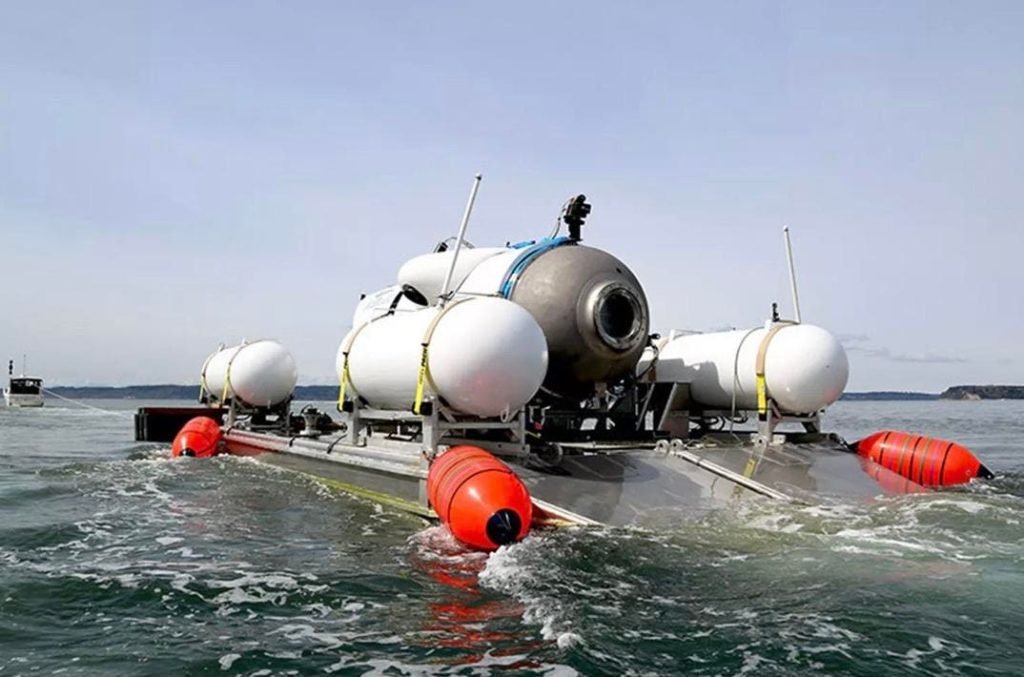There is a symmetry between exploration and failure. Without great risk, what would humankind know. Without great failure, how could we profoundly understand nature. So it’s ironic that the expedition of five rich people to arguably the most famous underwater wreckage on this planet will be better known for its catastrophic end than its originally planned brief exploration.
Among the deep questions that people everywhere are asking – why take the risk? How much more does anyone need to know about the sinking in April 1912, of the British passenger ship, the RMS Titanic? Why go?
At the risk of sounding like a rich guy with nothing but money and time, Michael Dubno essentially says – because it’s there. Dubno, a New Yorker, is a computer scientist–inventor – videogame developer with a deep curiosity about how things work. More than two years ago, he logged one of his most excellent adventures: a dive to the deepest part of the ocean, Challenger Deep, the Mariana Trench. It was a diving operation as ultra-sophisticated as the doomed OceanGate’s “Titan” was unsophisticated. He traveled in a purpose-built two-person submersible, a thick titanium sphere designed to take even greater pressure than was anticipated at Challenger Deep. The vessel was built by world-class aerospace and defense company, Triton Submarines and aboard it, Dubno descended almost seven miles to the lowest ocean floor on Earth. Trained extensively, supported by a well-manned expedition ship, and guided closely through every intricately planned step, Dubno considered the experience an acceptable risk, and one worth taking.
He says he’s always been interested in seeing the remains of the Titanic. “It’s one of the enduring mysteries of our age. It’s something epic films have been made about. It’s one of the primary tragedies of the ocean. And seeing the ship with my own eyes is of course a draw.”
In a statement about the lost crew of five, OceanGate CEO Stockton Rush, Shahzada Dawood and his son Suleman Dawood, Hamish Harding, and Paul-Henri Nargeolet, the Oceangate company called the men “true explorers who shared a distinct spirit of adventure and a deep passion for exploring and protecting the world’s oceans.”
There are men and women who, having inherited wealth or worked feverishly and brilliantly to earn it, find themselves seeking out the next big thing they can master. For the five men aboard the “Titan,” that thing was the Titanic.
Dubno gets it.
A member of the elite Explorers Club of New York, he’s seen things the average person hasn’t. “What I find is impact in each exploration. If you go up to the top of the Earth, as an example – you go up to the North Pole which looks like ice, because it is. If you walk a hundred feet in another direction you wouldn’t know that’s not the North Pole.
But there’s something about being at the North Pole where you realize that the Earth is spinning below you. You realize that you’re in every time zone at the same time.”
“I know what to expect when I go to France: I will have very good cheese and baguettes and a good time.” says Dubno. “But when you go to the North Pole you really don’t know what to expect. And when you go to the bottom of the ocean, you have an imagination as to what you will see and it usually doesn’t come close to matching, because you’ve never been there. So each one of these things is a brand new perspective.”
As the drama of the “Titan” submersible was about to unfold, Dubno was in close touch with a network of fellow adventurers, all watching the impending launch of the Titan off the coast of Newfoundland. He knew that fellow Explorers Club member, British born pilot and businessman Hamish Harding, was excited about the dive. Harding also had explored the Mariana Trench alongside Dubno.
But the more Dubno and others examined the backstory of the “Titan,” the more concerned they became. The company had a history of taking shortcuts and avoiding non-mandatory industry certification reviews. The New York Times published a letter sent to OceanGate five years ago from the Marine Technology Society warning of potential negative outcomes “from minor to catstrophic.”
The same year, a company whistleblower with safety concerns was fired. OceanGate was eager to press on with building the business and, in its view, leading the way to expanding ocean exploration. That in itself was a loss, says Dubno, because “arguing with engineers is one of the best ways to learn.”
“I think you want any machine that you’re risking your life with, like this, to be passively stable. What that means is that, for example, a sphere by itself and titanium by itself, works. Everything else might fail around you but the submersible will make it back to the surface because it will automatically do several things and rise. When I take a look at some of the specs on Titan, I see things that make me nervous. It’s made of two different materials on the outside – titanium for the front and the tube itself is carbon fiber. The shape is more capsule, which is less stable than a sphere.” And on Titan, says Dubno, “by using carbon fibers, they put in strain gauges to detect if there are issues. That’s kind of an active system that’s watching, rather than a passive system that just works.”
Dominik Wermus is a former U.S. Navy Submarine Officer, now a reservist, and working at the Johns Hopkins University Applied Physics Lab. “If you’re in the Navy and you do submarine service, that stuff is no joke. For officers, you have to do two years of training before you even step foot on a submarine. Plus non-stop exams and boards with a very high dropout rate. They don’t just let anybody step onto these things. And they make it clear to folks from the very beginning that – you can do the wrong thing and you can kill everybody onboard. And you are constantly practicing for when things go wrong, because so many things can go wrong.”
It’s just a chance Wermus would never take but, he says, the super-rich seem to have fewer reservations. “It happens in aviation too. Rich people get pilots’ licenses for cheap, grab planes, and disasters happen all the time.” Seasoned by years on Navy submarines, Wermus doesn’t get the civilian fascination with the wreck of the Titanic. “People, especially rich people, a lot of times, people are just bored. They want something to do: climb Everest, go into space, something they can brag to their friends about.”
For himself, Dubno says the Titan submersible was not a vessel that he would have boarded, and he knows that at least one friend had told Harding he had reservations about it. But there’s a thought process that sets in, says Dubno, that’s tough to shake. “When you go on a dive like this, at the start, you worry about the big stuff. But once you agree to do it, you think about the trivial things. People on the surface, like your relatives, are still thinking about the big things. While you’re down there, you’re in the moment and focused on what to see and do and so on. If you went down there and you were scared the entire time, you couldn’t possibly function. You would lose your mind.”
For four days, the riveting drama of the Titan commanded the world’s attention. Dubno asks for an understanding of the humanity of the tragedy. “It’s easy to think of this in the abstract – rich boys with toys, a machine failing. But it’s also about real people and the desire to explore and take risks.”
Read the full article here










